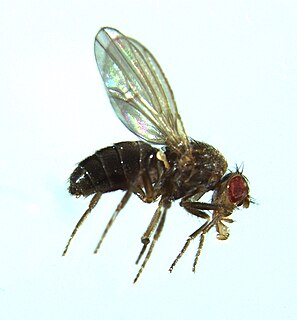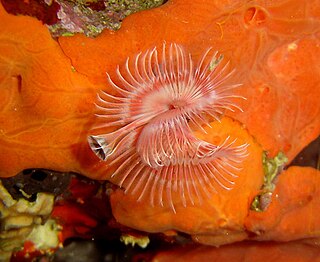 W
WThe abyssal grenadier, Coryphaenoides armatus, is an abyssal fish of the genus Coryphaenoides, found in all the world's oceans, at depths between 800 and 4,000 m. Its adult length is 20 to 40 cm, although Fishbase gives lengths up to 1 m. The abyssal grenadier's body is unique in that it contains two dorsal spines and about 124 dorsal soft rays, which are the flexible jointed rays supporting a fin nearest to the back in the spinal column. It has no anal spines, but has 115 anal soft rays along its body. The head and eyes of this fish are very large, while the mouth is very small. The color of the abyssal grenadier is brown apart from the abdomen, which is bluish.
 W
WAnoplogaster cornuta, the common fangtooth, is a species of deep sea fish found in temperate and tropical oceans worldwide. It is found at depths of from 2 to 5,000 metres with the adults usually found from 500 to 5,000 metres and the young usually found near the surface. This species grows to a total length of about 18 cm (7 in). While a source of food for pelagic carnivorous fishes, this species is of no interest for human fisheries.
 W
WCiona intestinalis is an ascidian, a tunicate with very soft tunic. Its Latin name means, literally, "pillar of intestines", referring to the fact that its body is a soft, translucent column-like structure, resembling a mass of intestines sprouting from a rock. It is a globally distributed cosmopolitan species. Since Linnaeus described the species, Ciona intestinalis has been used as a model invertebrate chordate in developmental biology and genomics. Studies conducted between 2005 and 2010 have shown that there are at least two, possibly four, sister species. More recently it has been shown that one of these species has already been described as Ciona robusta. By anthropogenic means, the species has invaded various parts of the world and is known as an invasive species.
 W
WDrosophila virilis is a species of fruit fly with a worldwide distribution, and was one of 12 fruit fly genomes sequenced for a large comparative study. The males have bright red gonads that can be seen through the cuticle.
Dwarf tapeworm is a cosmopolitan species though most common in temperate zones, and is one of the most common cestodes infecting humans, especially children.
 W
WMuggiaea atlantica is a species of small hydrozoan, a siphonophore in the family Diphyidae. It is a cosmopolitan species occurring in inshore waters of many of the world's oceans, and it has colonised new areas such as the North Sea and the Adriatic Sea. It is subject to large population swings, and has been held responsible for the death of farmed salmon in Norway. The species was first described by J.T. Cunningham in 1892 from a specimen obtained at Plymouth, England.
 W
WThe nematodes or roundworms constitute the phylum Nematoda, with plant-parasitic nematodes also known as eelworms. They are a diverse animal phylum inhabiting a broad range of environments. Taxonomically, they are classified along with insects and other moulting animals in the clade Ecdysozoa, and unlike flatworms, have tubular digestive systems with openings at both ends. Like tardigrades, they have a reduced number of Hox genes, but as their sister phylum Nematomorpha has kept the ancestral protostome Hox genotype, it shows that the reduction has occurred within the nematode phylum.
 W
WSalpa fusiformis, sometimes known as the common salp, is the most widespread species of salp. They have a cosmopolitan distribution, and can be found at depths of 0 to 800 m. They exhibit diel vertical migration, moving closer to the surface at night. They can occur in very dense swarms, as solitary zooids or as colonies. Solitary zooids usually measure 22 to 52 mm in length. They are barrel-shaped and elongated, with a rounded front and a flat rear. Aggregate zooids are 7 to 52 mm in length individually. They are usually barrel or spindle-shaped.
 W
WScalibregma inflatum, also known as T headed worm, is a burrowing marine polychaete. It is a cosmopolitan species that can be found from the Arctic to Antarctica, although most probably several species are confounded.
 W
WSerpula vermicularis, known by common names including the calcareous tubeworm, fan worm, plume worm or red tube worm, is a species of segmented marine polychaete worm in the family Serpulidae. It is the type species of the genus Serpula and was first described by Carl Linnaeus in his 1767 12th edition of Systema Naturae. It lives in a tube into which it can retract.
 W
WTardigrades, known colloquially as water bears or moss piglets, are a phylum of eight-legged segmented micro-animals. They were first described by the German zoologist Johann August Ephraim Goeze in 1773, who called them kleiner Wasserbär. In 1777, the Italian biologist Lazzaro Spallanzani named them Tardigrada, which means "slow steppers".